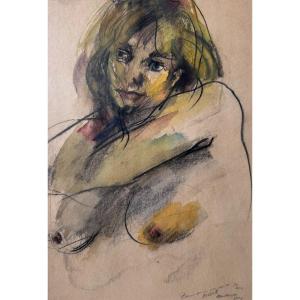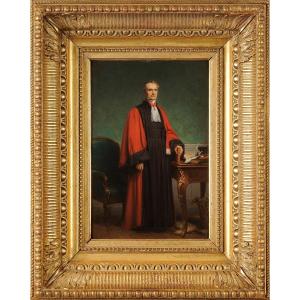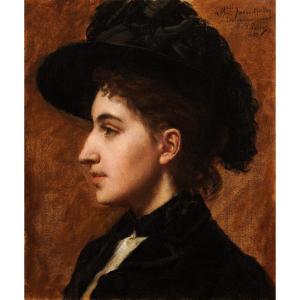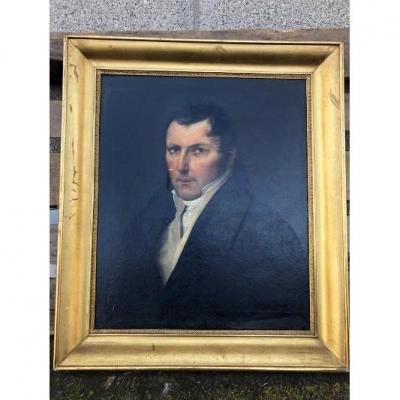Portrait of a Man Wearing a Frock Coat
Oil on canvas,
75 x 60 cm
Signed at the bottom left “Eug...”
Previously attributed to Eugène Delacroix on the reverse.
We attach to this portrait a drawing (approx. 16 x 20 cm) signed “Eug Delacroix,” likely to indicate the subject, a hypothesis we find unlikely.
Provenance:
Private collection, France
Eugène Devéria, born in 1805 in Paris and died in 1865, was a renowned French painter, belonging to the Romantic movement. A student of Girodet, Devéria made his debut at the Salon of 1827, where he distinguished himself with his mastery of portraits and historical scenes. He is particularly famous for his painting “The Birth of Henri IV,” exhibited at the Louvre.
The “Portrait of a Man Wearing a Frock Coat” depicts a 19th-century bourgeois man, elegantly dressed in a frock coat and bow tie, typical clothing of the Romantic era. The man’s posture, with his hand slipped under the frock coat, evokes a certain introspection and solemnity, characteristic of Devéria’s work. The understated background highlights the finesse of the model’s features and the precision of the clothing’s texture, showcasing the artist’s talent for detail.
Although this portrait was attributed to Delacroix, careful examination and stylistic characteristics confirm Devéria’s signature. The confusion with Delacroix, a contemporary of Devéria, underscores the shared influences between these two masters of French Romanticism. However, the techniques used here, such as the softness of the modeling and the psychological depth of the gaze, are emblematic of Devéria’s unique style.
The inclusion of a drawing signed “Eug Delacroix” with this painting adds an intriguing dimension to the work. Although unlikely, this association demonstrates the importance given to the subject and perhaps an attempt to contextualize the represented figure within the artistic circle of the time.
In summary, this portrait is a remarkable representation of 19th-century elegance and refinement, testifying to the artistic genius of Eugène Devéria, while offering a fascinating glimpse into the dynamics and influences among Romantic artists of this period.




































 Le Magazine de PROANTIC
Le Magazine de PROANTIC TRÉSORS Magazine
TRÉSORS Magazine Rivista Artiquariato
Rivista Artiquariato